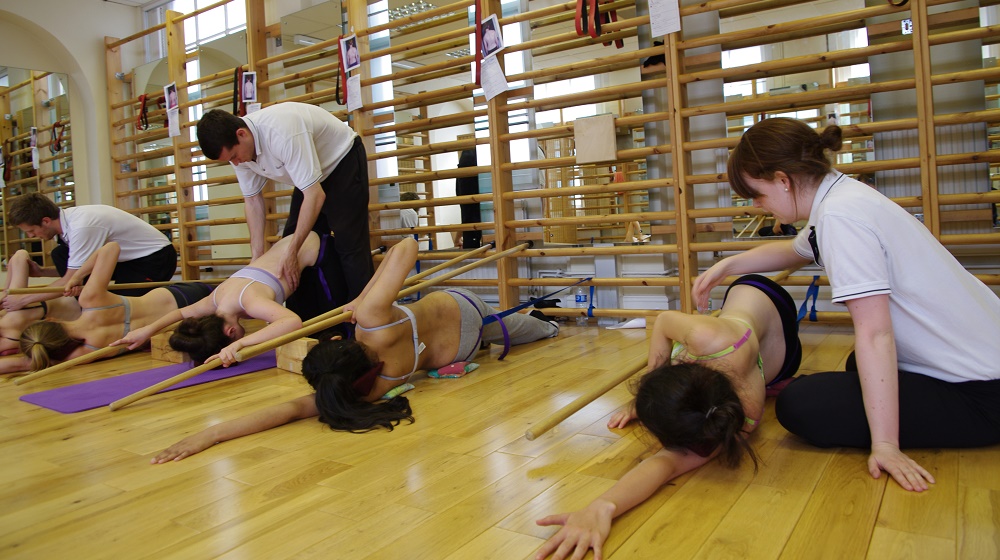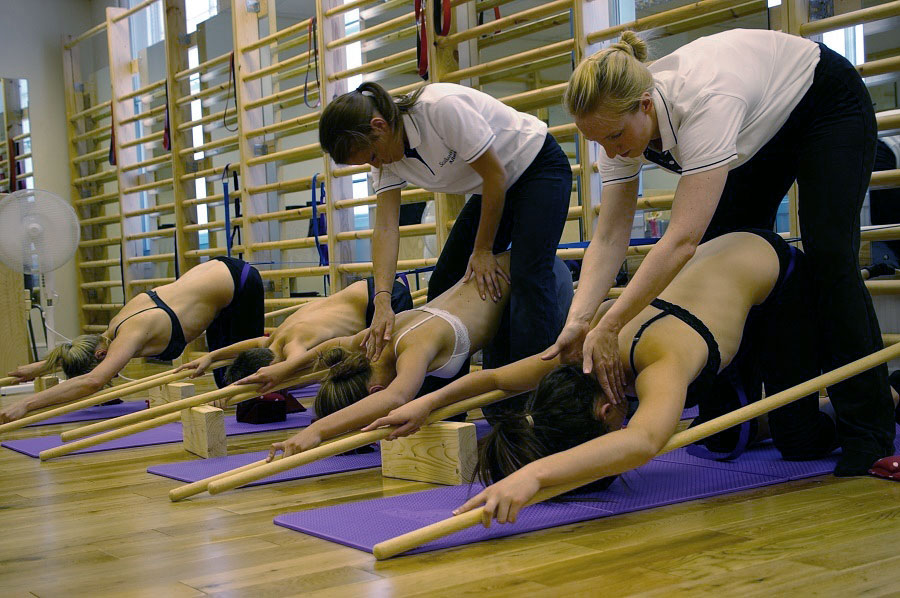Schroth Treatment is recognised around the world as the foremost specialist physiotherapy programme for the conservative management of scoliosis, either as a stand-alone programme or in conjunction with derivatives of Cheneau-Gensingen bracing.
The method was developed by Katharina Schroth who was born in 1894 in Dresden, Germany, and by the age of 16 was suffering from moderate scoliosis herself. After undergoing treatment with a steel brace and finding it heavy and cumbersome she began to develop her own more functional approach, with corrective breathing and over corrective positioning in front of a mirror.
By 1921, Schroth’s new method of treatment involving specific postural correction, corrective breathing patterns and postural perception, was being carried out along with rehabilitation exercises in her own clinic.
She and her daughter Christa Lehnert-Schroth opened an institute in Bad Sobernheim in West Germany which eventually expanded with a capacity to treat 150 inpatients at a time. The institute became the Asklepios Katharina Schroth Klinik in the 1980s.
As part of LOC’s scoliosis treatment package, our partner agency Scoliosis SOS will provide a comprehensive physiotherapy programme that adheres to the principles of the world-renowned Schroth Treatment.
At the initial consultation, a full specialist physiotherapy assessment is carried out with each patient to establish the most appropriate treatment, according to their spinal flexibility, age and the patient's own primary concerns. At this initial session, a postural programme and an individual exercise programme will be prescribed so that treatment can start immediately.

Image courtesy of ScoliosisSOS

Image courtesy of ScoliosisSOS
The programmes are not general physiotherapy as there is no evidence that general physiotherapy is any benefit to scoliosis patients. These programmes are curve-pattern specific and are individual to the patients’ own postural compensations and flexibility to manage, geared to address the patients' main concern– they are bespoke for each patient. Exercises can help to improve the length of the asymmetrical muscles, reduce rotational humps and prominences and prevent curve progression. In small immature curves, the exercises have been shown to help reduce the deformity (reduce the Cobb angle) without bracing.
In our dedicated scoliosis clinic, we have wall bars, poles, bean bags and cushions to help guide the physiotherapy exercises and positions. Exercises are tailor-made and therefore equipment is not always necessary for every patient.
In cases of larger thoracic scoliosis, rotational breathing can help de-rotate the scoliotic curve and stretch the muscles between the ribs which can be shortened or overlengthened. Patients will learn to use rotational breathing within their exercises to add to the 3-dimensional improvements and reduce rib cage deformity.

We are proud to announce the launch of our latest innovation in non-surgical treatment for pectus deformities. Our new dynamic chest compressor is one of the slimmest pectus braces on the market and is designed to reshape the chest without the need for invasive surgery.

Rosie’s very severe plagiocephaly was no problem for the LOCBand Lite 3D-printed cranial remoulding helmet, going from 16mm to 2mm in just six months.

When John came to see us, his ankle was in a bad way. He had around 60mm of his tibia missing and not much if any talus present. He needed crutches to support him to walk. A gait analysis and a new bespoke carbon fibre knee ankle foot orthosis (KAFO) later and he is able to walk again without crutches.

Matilde travelled from Chile to LOC for bracing treatment for her adolescent idiopathic scoliosis. Now, nearly a year and a half since she started wearing her brace, she has achieved near-total correction of the curvature of her spine. This is her scoliosis bracing story.

After only 6 months of wearing bespoke pectus braces from The London Orthotic Consultancy, Will started to notice a visible difference in his pectus carinatum.

After trying out several scoliosis braces in Romania, Ukraine and Turkey, Iulia begins treatment with the LOC Scoliosis Brace and is already seeing results in a matter of months. Here her mum, Raluca, describes how and why they came to LOC for her treatment.

Through bracing treatment with the dynamic chest compressor, Jack has achieved 90% correction in his pectus carinatum after only two months. Here, mum describes Jack's non-surgical treatment journey.

Baby Iyad's plagiocephaly was classed as 'severe' yet was treated in just 3 months of wearing the LOCband Lite helmet.